As usual, the January CES in Las Vegas gathered a large number of experts. Traditionally, high-tech TVs have been the focus of attention. This year AI 8K upscaling in the Samsung Q950TS 8K and LG 8K TVs, bezel-less Infinity Design of Q950TS with a screen-to-body ratio of nearly 99% and super-thin LG Wallpaper series with a thickness under 4mm, improved game modes, sound control technologies, and adaptive options became the major innovative directions.
Of course, Sony also did not stand aside, introducing the new 8K LCD Z8H and 4K OLED A8H Master Series models.
As known, last year the company introduced the Master Series Z9G 8K, including 85-inch Sony XBR-85Z9G (KD-85ZG9) worth about $ 13,000 and the huge 98-inch XBR-98Z9G (KD-98ZG9) with a astronomical price of $ 70,000. However, today the cost of the Sony XBR-85Z9G has dropped to $ 10,000. In these models, the company used the new improved X1 Ultimate Proccesor together with the new 8K X-Reality PRO software technology.
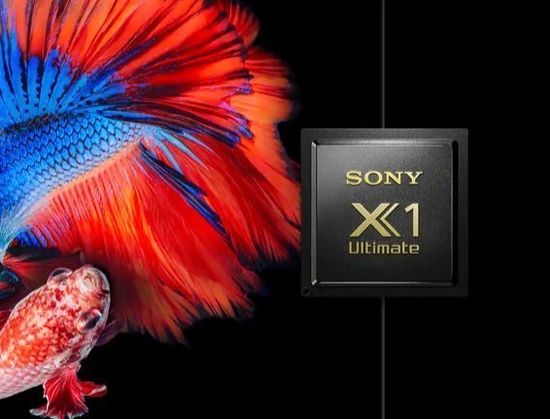
High 8K upscaling efficiency allowed the company to use them in new models of this year. As known, Sony upscaling algorithms use dual database processing. The first database recognizes compression noise, compares it with the reference image and eliminates artifacts. The second database increases resolution based on reference images.
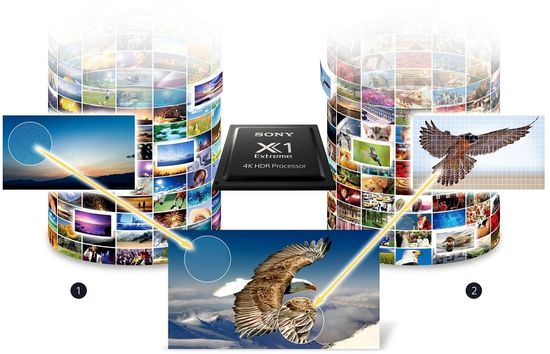
Design
8K LCD Z8H with an elegant silver rim looks very stylish.
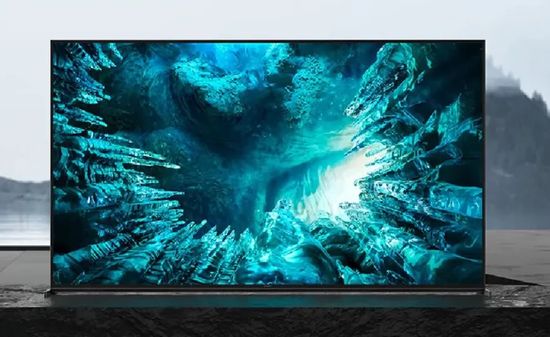
The company named this unusual design an Immersive Edge concept. According to the designers, this design increases the immersion level and at the same time expand the functionality of the stand.
The name emphasizes the idea of enhancing immersion through an edge-oriented aesthetic. The minimalistic design with an ultra-narrow frame and an almost imperceptible stand minimize the visualization of the TV when watching. Together with Sound-from-Picture Reality, these two factors significantly raise the level of immersion.
As known, the company originally developed Acoustic Surface Audio for OLED models. Then based on it, Sony implemented Acoustic Multi-Audio in the ZG9 series. The technology uses four front-facing speakers, including two below the screen and two above it. This scheme effectively forms a surround sound. The company called this effect Sound-from-Picture Reality.
The adjustable legs radically simplified the installation of the TV. They can move from the edges of the screen to the center.
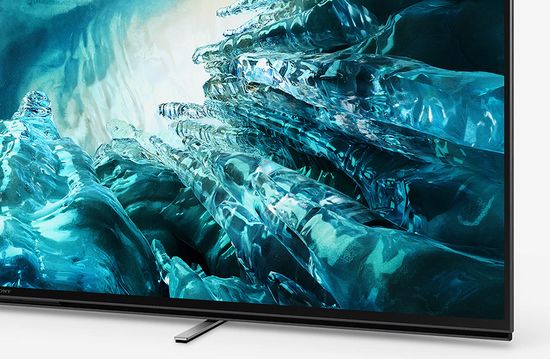
Moreover, the legs can rotate 90 degrees, providing a low-profile installation with virtually no clearance.
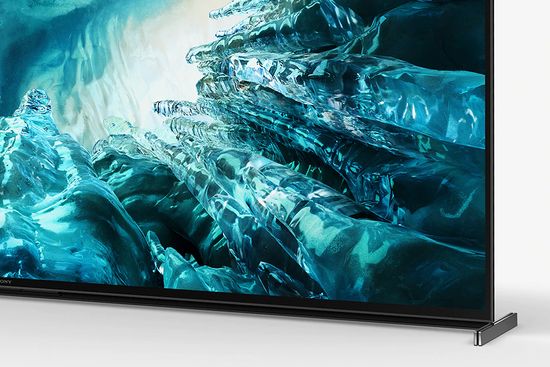
Unfortunately, the main competitors do not offer a similar option.
The 4K OLED A8H uses the One Slate design. It also has legs with adjustable height.
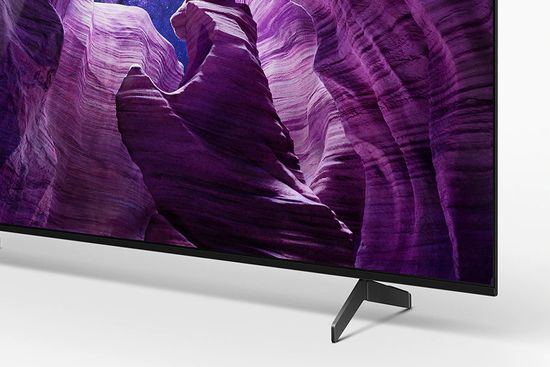
The choice of leg height varies up to 5-7 cm. This adjustment is very convenient, for example, when installing a TV in conjunction with a sound bar.
Ambient Optimization
The Sony Ambient Optimization feature fits perfectly into the overall trend of increasing the adaptability level of modern TVs. The company introduced it as “a new technology that optimises picture and sound quality in any customer environment.” For this purpose, the Samsung Q950TS 8K uses the Adaptive Picture function, and LG – new Dolby Vision IQ. The Ambient Optimization function automatically optimizes image parameters depending on the ambient light conditions.
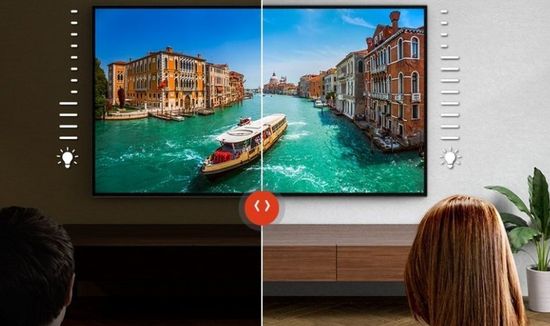
Of course, the work of Ambient Optimization is much more complicated than simply brightness increasing or decreasing in a dark or light room. In fact, it provides automatic adjustment of color gamma in the local areas of the screen. For example, for a bright room, the TV increases the brightness of the details in the shadows to improve their visibility. But at the same time, it does not change the brightness in bright areas of the frame to prevent glare. Moreover, the system increases the saturation of colors to eliminate the matting effect due to ambient light. Theoretically, Ambient Optimization will be especially effective for the HDR format.
Moreover, this technology detects surrounding objects, including curtains or furniture, and calibrates the acoustics settings to compensate for their effects on the propagation of sound waves.
X-Motion Clarity technology, Frame Tweeter and other
As known, modern TVs use the BFI function (Black Frame Insertion), which briefly turns off the backlight. Visually, this process is equivalent to a twofold increase in frame rate, which reduces blur in highly dynamic scenes. Unfortunately, BFI simultaneously reduces brightness. To solve this problem, Sony developed X-Motion Clarity technology, which replaced the previous Motionflow XR. In fact, X-Motion Clarity controls the transitions between frames, providing consistent brightness at high clarity and smoothness.
Initially, X-Motion Clarity Technology was developed for LCD televisions with FALD (full array local dimming). Today, the company has successfully adapted this technology for OLED models.
The Z8H series uses innovative Frame Tweeter technology, which transfers sound vibrations to the TV frame, turning it into a sound source.
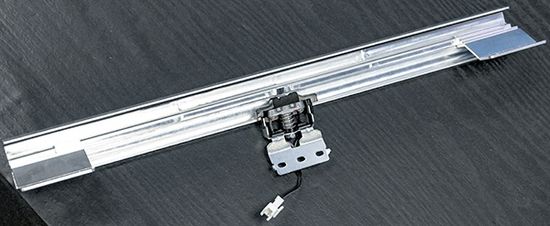
In addition, new TVs support Netflix Calibrated Mode, IMAX Enhanced, Dolby Atmos and Sony’s Acoustic Surface Audio+ with a subwoofer behind the screen and two actuators to vibrate the display.
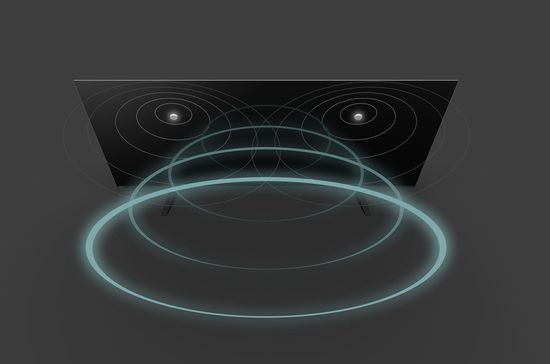
Unfortunately, unlike the Sony 8K Z8H, the A8H does not have HDMI 2.1.
Key Features
BRAVIA 8K HDR Z8H series
It includes 75- and 85-inch TVs with Full Array LED backlight.
Key Features:
– ultra-high contrast with 8K resolution;
– HDMI 2.1;
– peak brightness exceeds 1000 nits;
– X1Ultimate processor with 8K X-RealityPRO technology (8K upscaling);
– Frame Tweeter + Sound-from-Picture Reality;
– adjustable stand;
– HDR10, Dolby Vision and HLG support;
– Ambient Optimization;
– compatible with Dolby Vision and Dolby Atmos;
– voice control;
– support for Apple AirPlay 2, HomeKit and Amazon Alexa;
– Android 9 Pie;
– support for 4K @ 120fps.
4K HDR OLED A8H series
It includes 55- and 65-inch XBR55A8H and XBR65A8H TVs
Key Features:
– X1Ultimate processor;
– Pixel Contrast Booster;
– X-Motion Clarity;
– Acoustic Surface Audio + two subwoofers;
– Ambient Optimization;
– compatible with Dolby Vision and Dolby Atmos;
– support for Apple AirPlay 2, HomeKit and Amazon Alexa;
– Android 9 Pie.
In addition, the company expanded last year’s super-popular A9G series with the addition of a 48-inch XBR-48A9G. As known, LG this year also offered a 48-inch LG OLED48CXPUA. Apparently, the main manufacturers of OLED TVs are planning to expand their lineup with low-cost models with a relatively small screen. Of course, many consumers will welcome the new offer.
Conclusion
Once again, the company fully met the expectations of Sony fans. In fact, the Sony 2020 lineup contains a complete list of current TVs, including LCD and OLED models with 4K and 8K resolution. In addition, the company demonstrated its commitment to the innovation trend by introducing new Ambient Optimization mode, X-Motion Clarity for OLED, and promising Frame Tweeter technology.
Of course, Samsung, LG and other leaders in this segment also presented a large number of interesting innovative models. But the results of their competition will depend on the pricing policy of companies, which will be determined in the next few months.
Video demonstrates Sony BRAVIA Z8H series at CES 2020.
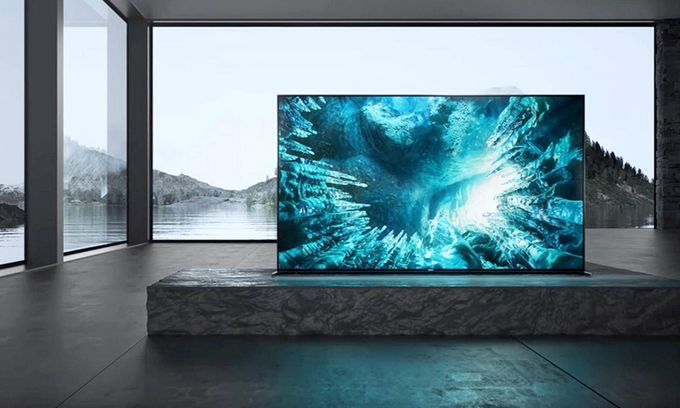
Pingback: TCL QLED 4K C715 and C815 Overview - The Appliances Reviews
Pingback: Samsung Neo QLED Mini-LED vs LG QNED Mini-LED vs TCL OD-Zero Mini-LED at CES 2021 Review - The Appliances Reviews
Pingback: QD-OLED, QD-MicroLED and QDEL technologies in quantum dot display Review - The Appliances Reviews